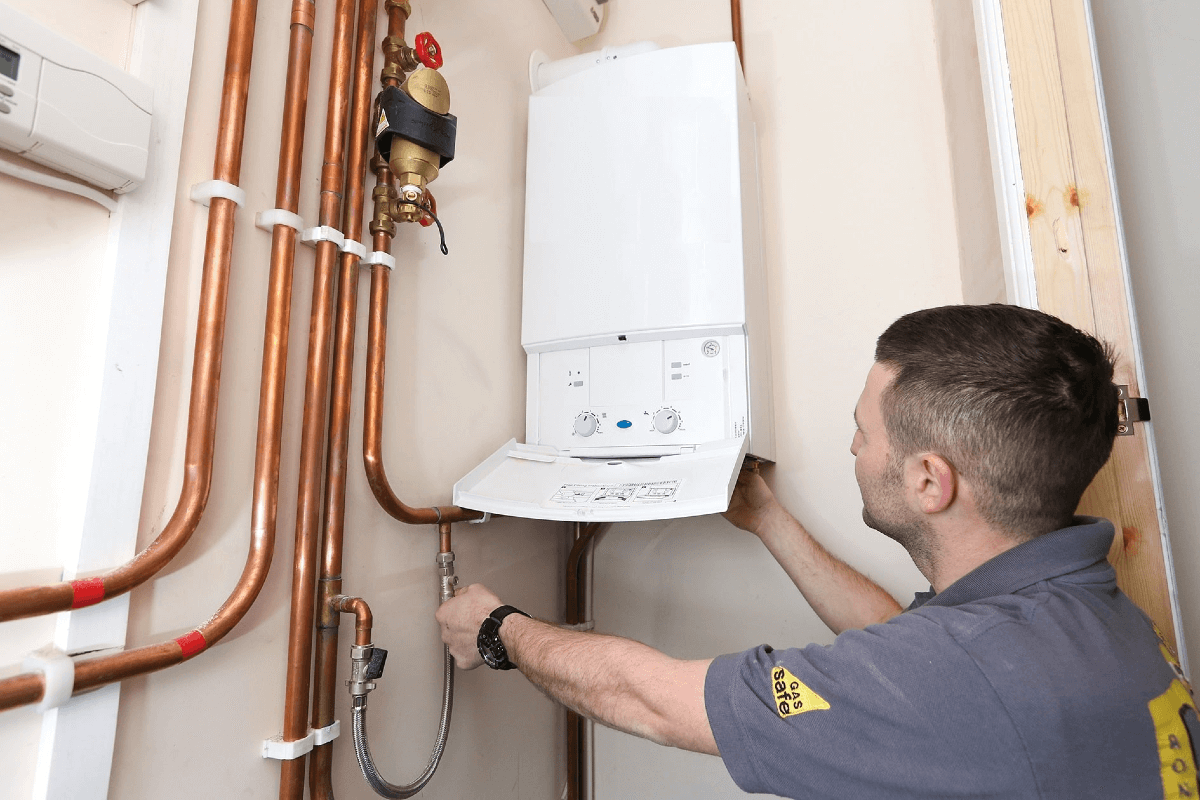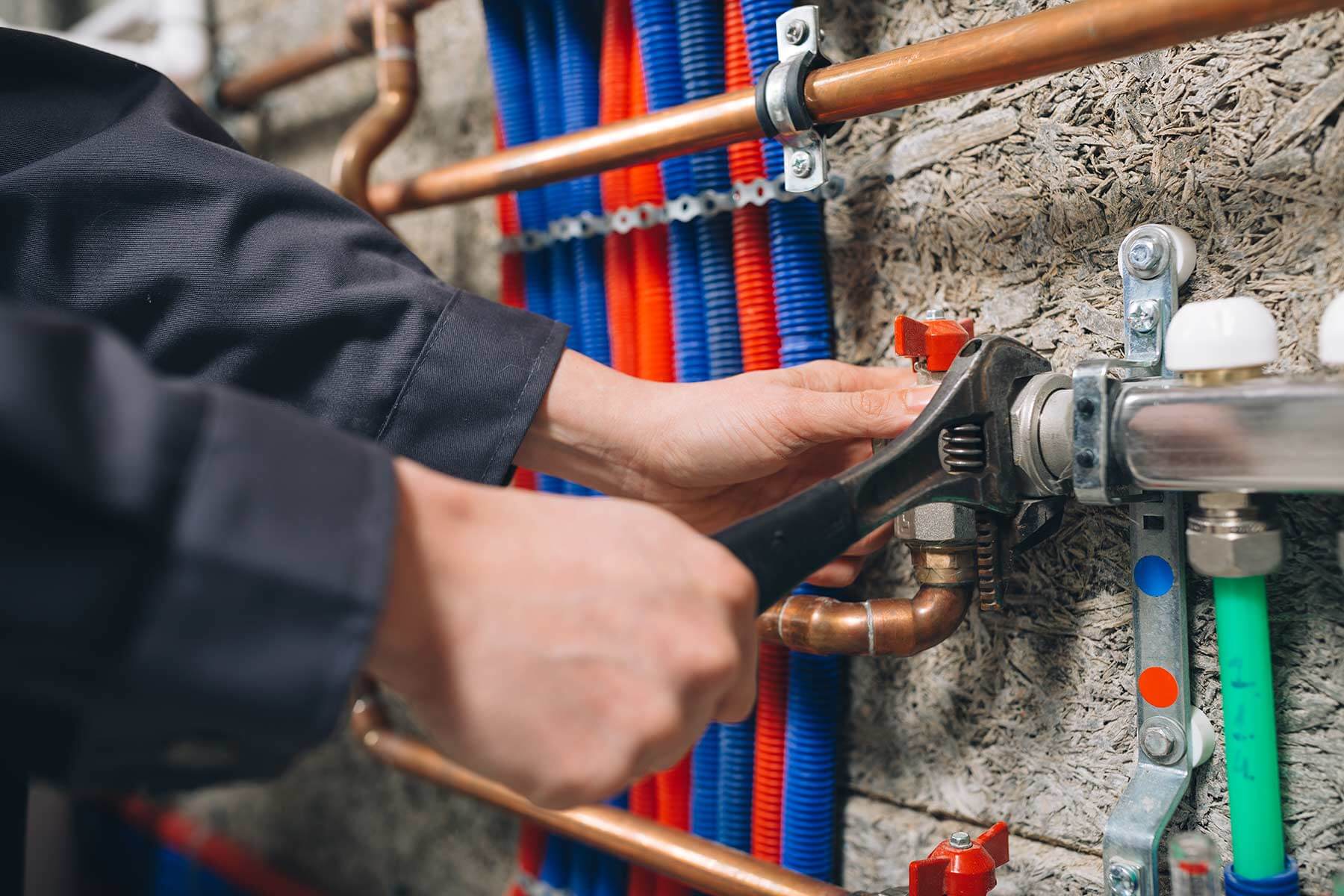Plumbing and heating repair is an essential aspect of home maintenance, ensuring the comfort and safety of your living space. This comprehensive guide delves into the common issues and solutions for plumbing and heating systems, empowering homeowners with the knowledge to address minor problems and prepare for emergencies.
From identifying and troubleshooting leaks to replacing filters and bleeding radiators, this guide provides step-by-step instructions and expert tips to help you keep your plumbing and heating systems running smoothly.
Plumbing Repair
Plumbing issues are common in both residential and commercial buildings, causing inconvenience and potential damage. Understanding the most common problems and learning basic troubleshooting techniques can help you identify and resolve minor issues quickly and effectively.
Identifying Common Plumbing Problems
- Leaking faucets:Dripping or running water from a faucet indicates a leak.
- Clogged drains:Slow drainage or standing water in sinks, showers, or bathtubs suggests a blockage.
- Running toilets:A constantly running toilet can waste significant amounts of water.
- Water pressure issues:Low or high water pressure can affect the performance of fixtures and appliances.
- Frozen pipes:In cold climates, pipes can freeze and burst, causing extensive damage.
Troubleshooting Plumbing Problems
Before attempting any repairs, ensure you have access to the necessary tools and safety gear. If you are uncomfortable with a particular task, do not hesitate to call a professional plumber.
Fixing a Leaky Faucet
- Identify the type of faucet and gather the appropriate tools.
- Turn off the water supply to the faucet.
- Remove the aerator (if present) and any visible screws.
- Replace the washer or O-ring that is causing the leak.
- Reassemble the faucet and turn on the water supply.
Unclogging a Drain
- Using a plunger:Fill the sink or tub with enough water to cover the plunger cup. Place the plunger over the drain and pump vigorously.
- Using a drain snake:Insert the snake into the drain and rotate it to break up the blockage. Slowly pull out the snake to remove the debris.
- Using a chemical drain cleaner:Follow the manufacturer’s instructions carefully and avoid using harsh chemicals that can damage pipes.
Heating Repair

Maintaining a comfortable indoor temperature during cold seasons is crucial for health and well-being. Heating systems, however, can encounter various issues that require prompt attention. This guide will provide insights into the different types of heating systems, their common problems, and practical steps for troubleshooting and performing basic repairs.
Types of Heating Systems
- Forced-Air Systems:Utilize a furnace or heat pump to circulate heated air through ducts.
- Hydronic Systems:Employ hot water or steam to warm radiators, baseboards, or radiant floor panels.
- Electric Systems:Convert electrical energy into heat through baseboard heaters, wall heaters, or heat pumps.
Common Heating Problems
- No Heat:Malfunctioning thermostat, faulty ignition, or fuel supply issues.
- Uneven Heating:Blocked or dirty air filters, closed vents, or improper system balancing.
- Noisy Operation:Worn-out blower motor, loose ducts, or rattling components.
- Leaking:Cracked or damaged pipes, radiators, or heat exchangers.
- High Energy Bills:Inefficient equipment, improper insulation, or poor system maintenance.
Troubleshooting and Basic Repairs
Before attempting any repairs, ensure safety by turning off the power or gas supply to the heating system. For more complex issues, it is advisable to consult a qualified technician.
- Replacing a Furnace Filter:Locate and replace the filter regularly (monthly or as recommended by the manufacturer) to maintain airflow and prevent overheating.
- Bleeding a Radiator:Release trapped air from radiators to improve heat distribution. Use a radiator key to open the bleed valve slightly until water or steam escapes.
- Checking Thermostat Settings:Ensure the thermostat is set to the desired temperature and the batteries are fresh.
- Inspecting Ducts:Check for blockages or leaks in air ducts. Clean or repair as needed.
Emergency Plumbing and Heating Services

Plumbing and heating emergencies can occur at any time, causing significant inconvenience and potential damage to your home or business. It is crucial to be prepared and have an emergency plumber or heating technician on call to address these issues promptly.
Types of Plumbing and Heating Emergencies
- Burst pipes:A burst pipe can cause significant flooding and water damage, requiring immediate attention.
- Frozen pipes:Frozen pipes can burst when they thaw, leading to water damage and potential property loss.
- Gas leaks:Gas leaks pose a serious safety hazard and should be addressed immediately by a qualified technician.
- Electrical issues:Electrical problems with plumbing or heating systems can be dangerous and require prompt attention.
- No heat or hot water:In cold weather, a sudden loss of heat or hot water can create uncomfortable and potentially hazardous conditions.
Importance of Having an Emergency Plumber or Heating Technician on Call, Plumbing and heating repair
Having an emergency plumber or heating technician on call provides peace of mind and ensures that you can access professional help quickly in the event of an emergency. They can:
- Diagnose and repair plumbing or heating problems efficiently.
- Prevent further damage or injury by addressing issues promptly.
- Provide temporary solutions to mitigate the impact of an emergency until a permanent fix can be implemented.
- Offer advice and guidance on how to prevent future emergencies.
Tips on Preparing for and Responding to Plumbing and Heating Emergencies
To prepare for and respond to plumbing and heating emergencies effectively, consider the following tips:
- Locate your main water and gas shut-off valves:Knowing where these valves are located will enable you to quickly shut off water or gas in case of an emergency.
- Have a plan for contacting an emergency plumber or heating technician:Keep their contact information readily available in your phone or in a visible location.
- Consider installing leak detectors:Leak detectors can alert you to potential water leaks before they cause significant damage.
- Insulate your pipes:Insulating your pipes can help prevent freezing during cold weather.
- Regularly inspect and maintain your plumbing and heating systems:This can help identify potential problems early on and prevent emergencies from occurring.
Hiring a Plumbing and Heating Contractor

When it comes to plumbing and heating repairs, it’s crucial to hire a reputable and qualified contractor to ensure the safety and efficiency of your systems. Here are some factors to consider:
- Licensing and Insurance:Verify that the contractor is licensed and insured to perform the work in your area. This ensures that they have met the necessary training and safety standards.
- Experience and Expertise:Look for a contractor with experience in the specific type of repair or installation you need. Check their portfolio and ask for references from previous clients.
- Reputation:Research the contractor’s reputation online and through industry organizations. Positive reviews and testimonials can indicate a track record of satisfied customers.
- Communication and Responsiveness:Choose a contractor who is responsive to your inquiries, provides clear explanations, and keeps you updated on the progress of the work.
Tips for Finding a Reputable Contractor
* Get Referrals:Ask friends, family, or neighbors for recommendations. Personal referrals can be a valuable source of reliable contractors.
Check Online Reviews
Read reviews on platforms like Google My Business, Yelp, and Angie’s List to gather insights into the contractor’s reputation and customer satisfaction.
Contact Industry Organizations
Reach out to professional organizations like the Plumbing-Heating-Cooling Contractors National Association (PHCC) or the National Association of Home Builders (NAHB) for referrals.
Interview Multiple Contractors
Get quotes from several contractors to compare prices, experience, and customer service.
Importance of Multiple Quotes and References
* Compare Costs:Getting multiple quotes allows you to compare prices and ensure you’re not overpaying.
Verify Experience
Request references from each contractor to check their experience and the quality of their work. Contact the references to inquire about the contractor’s reliability, professionalism, and attention to detail.
Last Recap: Plumbing And Heating Repair
By understanding the basics of plumbing and heating repair, homeowners can save time, money, and ensure the well-being of their families. Remember, timely maintenance and professional assistance when needed are crucial for a comfortable and worry-free home.
